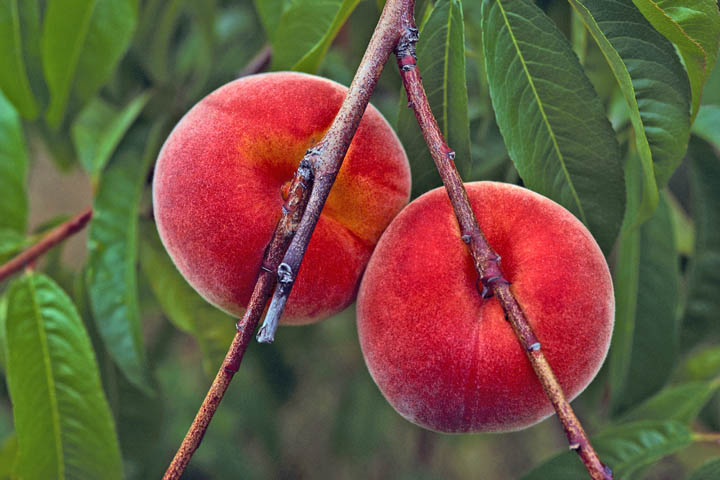February 9, 2012

A biological control agent of a common peach tree pest may be an effective alternative to chemical applications, if U.S. Department of Agriculture entomologists can make it economically worthwhile for large-scale commercial growers.
USDA-Agricultural Research Service entomologists at the Southeastern Fruit and Tree Nut Research Laboratory in Byron, Ga., are studying the implementation of entomopathogenic nematodes on the peachtree borer and lesser peachtree borer to determine the optimum level of application and formulation for effective control.
“In small field plots, we demonstrated that the nematode Steinernema carpocapsae can control peachtree borer damage at levels similar to that of recommended chemical insecticide treatments, and that application costs are likely to be highly economical,” said USDA-ARS research entomologist David Shapiro-Ilan.
“The primary challenge that remains is to determine how best to apply the nematodes at a commercial scale so growers can adopt the practice.”
Shapiro-Ilan received a $226,100 Southern Sustainable Agriculture Research and Education Grant (SARE) to study the best and most economical application methods in large-scale orchards.
Other research participants include USDA research entomologists Ted Cottrell and Robert Behle; University of Georgia assistant professor Greg Colson; University of Georgia professor Dan Horton; USDA research chemist Christopher Dunlap; University of Florida-North Florida Research and Education Center professor Russ Mizell; and Georgia peach grower Sean Lennon.
Previous USDA-ARS research has found that entomopathogenic nematodes are effective in controlling, on a small scale, the peachtree borer and lesser peachtree borer — two pests whose feeding can injure trees, invite pathogens, and cause a decline in fruit productivity. Eventually the pests will kill the tree.
“The nematodes are the coolest organisms on the planet,” said Shapiro-Ilan. “They share a mutualistic relationship with a bacterium that lives inside of them. And when they attack the peach tree pests, they release the bacterium that kills the insect and provides the nematode and the bacterium with a food source.
“In addition, the nematodes are host specific and are not harmful to the environment or other beneficials.”
Shapiro-Ilan said the entomopathogenic nematodes, soil-borne organisms, are most effective in controlling the peachtree borer, whose larvae feed on underground tree roots at the base of the tree during the spring.
Sitting duck
“The peachtree borer is a sitting duck,” said Shapiro-Ilan. “However, the lesser peachtree borer is more of a challenge to control, because the larvae attack the tree above ground.”
In the SARE-funded work, the USDA researchers are studying the best ways to apply the entomopathogenic nematodes for both pests.
“We’ve identified the applicable rate of nematodes at 300,000 per tree, but since there is no way of knowing which tree may or may not be infected, we have to apply the nematodes to every tree. When you are dealing with 1,000 acres of trees, that’s a lot to handle, from an efficiency and economic standpoint,” said Shapiro-Ilan.
One solution the researchers are looking at to control the peachtree borer is a microinjection irrigation system that allows growers to make multiple targeted applications at the spot of the infestation.
Another technology showing promise is a sprayer system that senses and applies nematode treatments just at the base of a tree trunk, eliminating overlap and waste.
For the lesser peachtree borer, the researchers are studying the effectiveness of a spray gel that could be applied to the tree.
“It’s important that whatever products we use protect the nematodes from desiccation and UV light, as the nematodes are sensitive to UV light and require moisture to survive,” said Cottrell.
Interest in using microbial biocontrol agents continues to increase due to increasing limitations of chemical applications.
For example, growers are allowed a limited number of applications per year of the broad-spectrum pesticide chlorpyrifos, which is commonly used to control both the peachtree borer and lesser peachtree borer.
For lesser peachtree borer, insect activity in the orchard from March through November far exceeds the residual activity of the applied insecticide.
“When the peachtree borer goes through one or two generations per year, and the lesser peachtree borer goes through three or more generations, that insecticide application won’t last long,” said Cottrell.
“This is the opportune time for us to find an alternative to controlling these pests which is just as effective as chemical applications,” said Shapiro-Ilan.
The biggest challenge the researchers face is the technology transfer — putting in growers’ hands a new method whose inputs would be economical, as well produce a profitable end result.
“We are on our way,” said Shapiro-Ilan. “We’ve found that the cost of applying the nematodes may be as low as $15 an acre, which is similar to current pesticide applications (about $12 an acre). That could be the cheapest nematode application in any commodity.”
For more information on the project, “Enhancing Natural Enemy Systems: Biocontrol implementation for peachtree borers,” visit the national SARE projects database and refer to project number LS11-241.
You May Also Like




